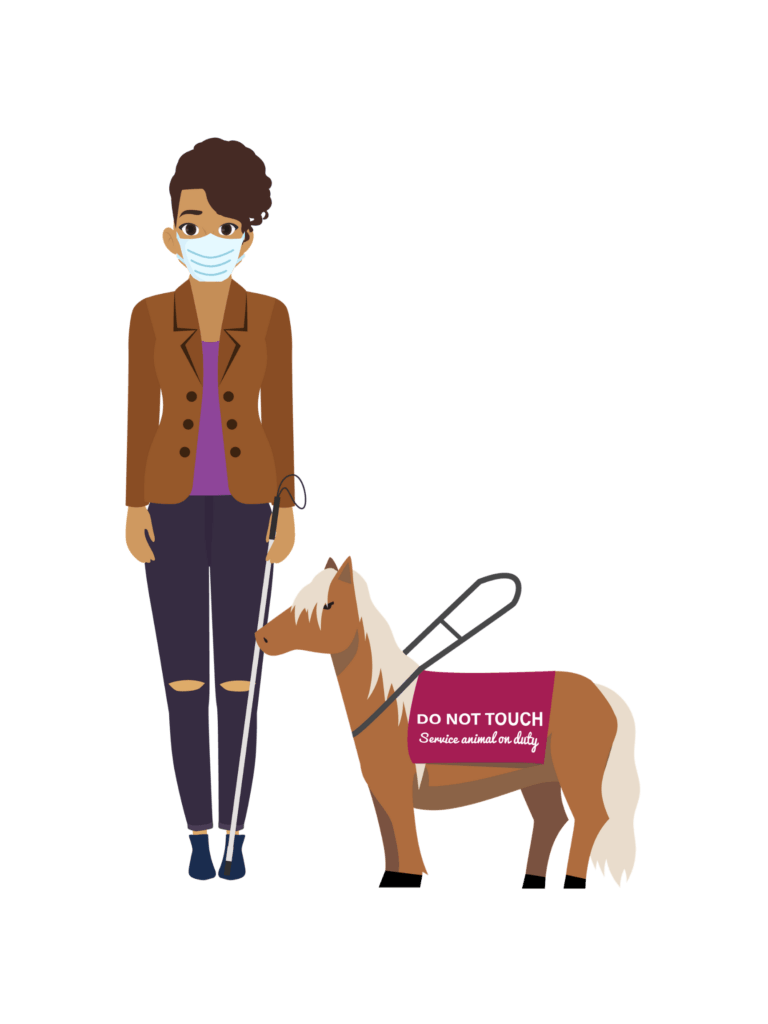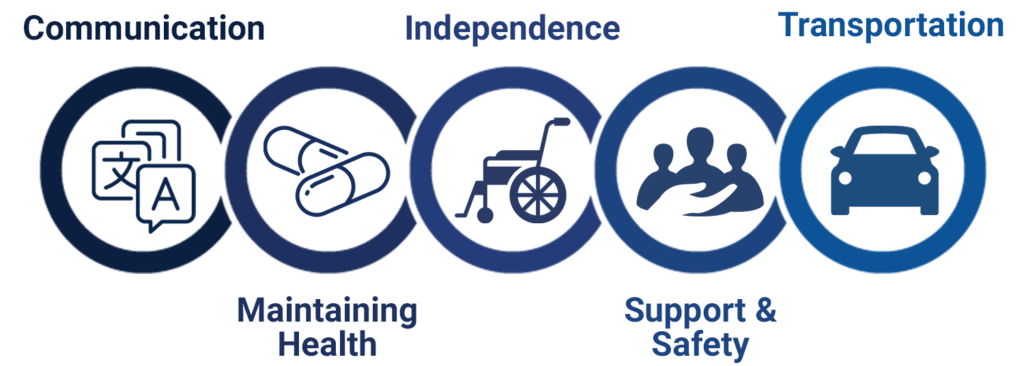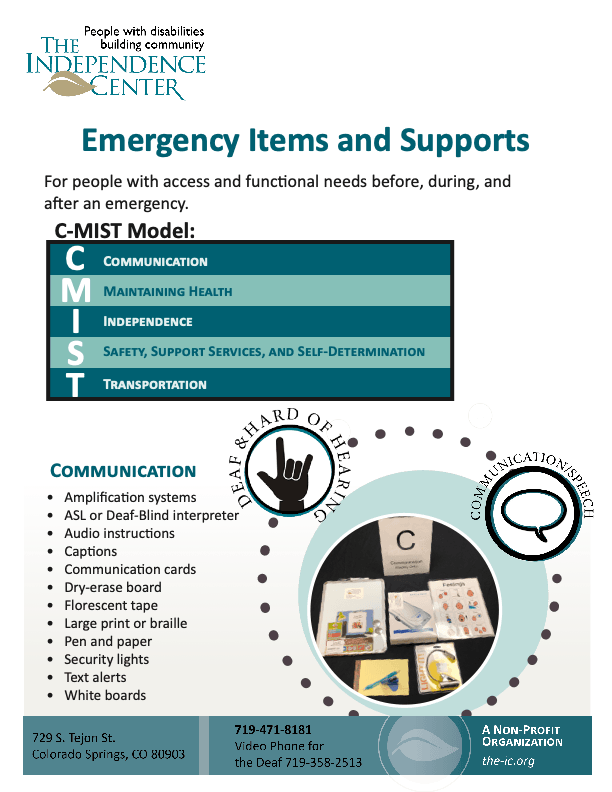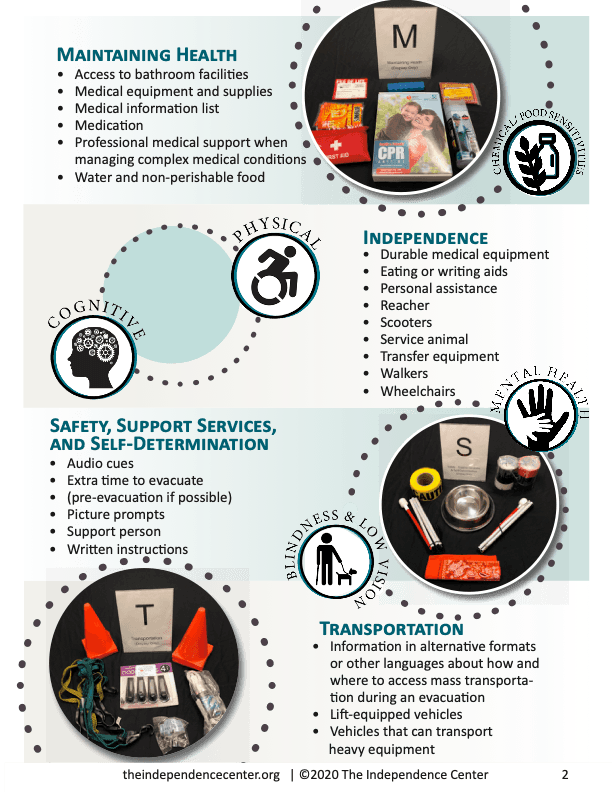The CMIST Framework _review


Carrie: We’ve been talking about access needs and function needs. Someone with access needs faces challenges accessing disaster or emergency resources or services. Someone with functional needs faces challenges with everyday functioning, like communication, staying healthy by taking medicine or maintaining their independence by using medical equipment, mobility equipment, assistive devices, service animals, or with support from someone else.
We said that the CMIST framework is useful for describing and planning for access and functional needs. First we’ll talk about this framework. Then we’ll give you some examples to think about.
The CMIST framework breaks access and functional needs into 5 categories. An emergency plan that addresses CMIST needs is likely to be 4ALL.
The CMIST framework assumes that there are 5 broad categories of access and functional needs: communication, maintaining health, independence, support & safety, and transportation. CMIST can be used for temporary and permanent conditions. Someone with a broken leg and someone without a car may benefit from CMIST. It’s not about a label or diagnosis. It’s about needs someone may have during an emergency.

bc/Pages/at-risk.aspx
Here is how the Office of the Assistant Secretary for Preparedness and Response (ASPR) describes CMIST:
Communication
“Individuals who speak sign language, who have limited English proficiency, or who have limited ability to speak, see, hear, or understand.”
“People with communication needs may have limited ability to hear announcements, see signs, understand messages, or verbalize their concerns.”
Maintaining Health
“Individuals who may require specific medications, supplies, services, durable medical equipment, electricity for life-maintaining equipment, breastfeeding and infant/childcare, or nutrition, etc.”
“Early identification and planning for AFN can help to reduce the negative impacts of a disaster on individuals’ health. This includes:
• Maintaining chronic health conditions
• Minimizing preventable medical conditions
• Avoiding making an individual’s health status worse”
Independence
“Individuals who function independently with assistance from mobility devices or assistive technology, vision and communication aids, service animals, etc.”
“Independence is the outcome of ensuring that a person’s access and functional needs are addressed as long as they are not separated from their devices, assistive technology, service animals, etc.”
Support & Safety
“Some individuals may become separated from caregivers and need additional personal care assistance; experience higher levels of distress and need support for anxiety, psychological, or behavioral health needs; or require a trauma-informed approach or support for personal safety.”
“Early identification and planning for AFN can help to reduce the negative impacts of a disaster on individuals’ wellbeing. Some people may have lost caregiver assistance and require additional support; some individuals may find it difficult to cope in a new or strange environment or have difficulty understanding or remembering; and some individuals may have experienced trauma or be victims of abuse.”
Transportation
“Individuals who lack access to personal transportation, are unable to drive due to decreased or impaired mobility that may come with age and/or disability, temporary conditions, injury, or legal restriction.”
“Disasters can significantly reduce transportation options, inhibiting individuals from accessing services, staying connected, etc. Disaster planning requires coordination with mass transit and accessible transportation services providers.”
(ASPR, 2020)

Carrie: Look at some emergency items and supports to meet CMIST needs. Whole community emergency plans should include information about CMIST resources and where to find them if needed during an emergency.


https://www.theindependencecenter.org/wp-content/uploads/2020/07/C-Mist.pdf

PJ: You remember these folks, right? They’ve agreed to talk to you about their CMIST needs.
Click the quiz link below to speak to each person about their CMIST needs.
